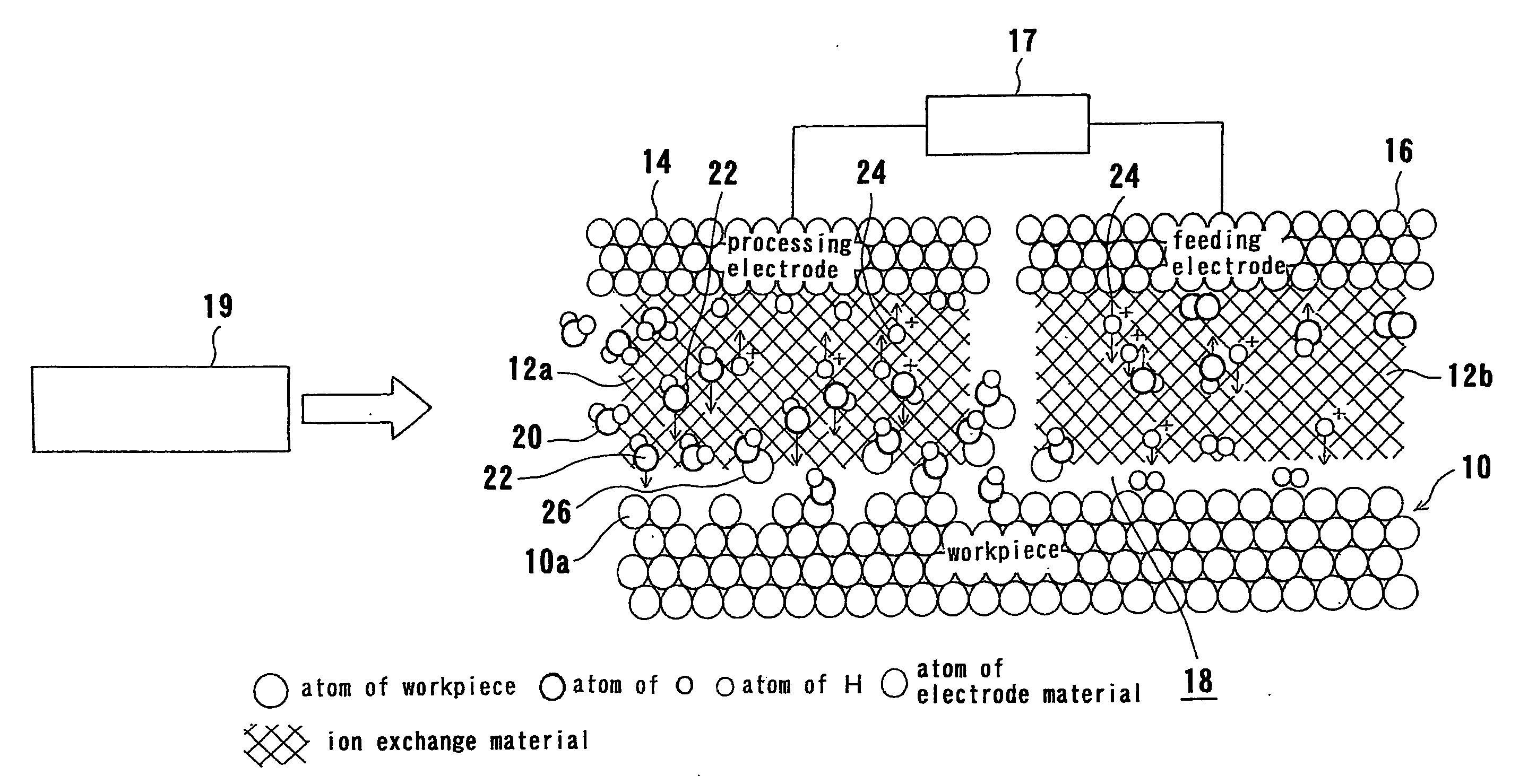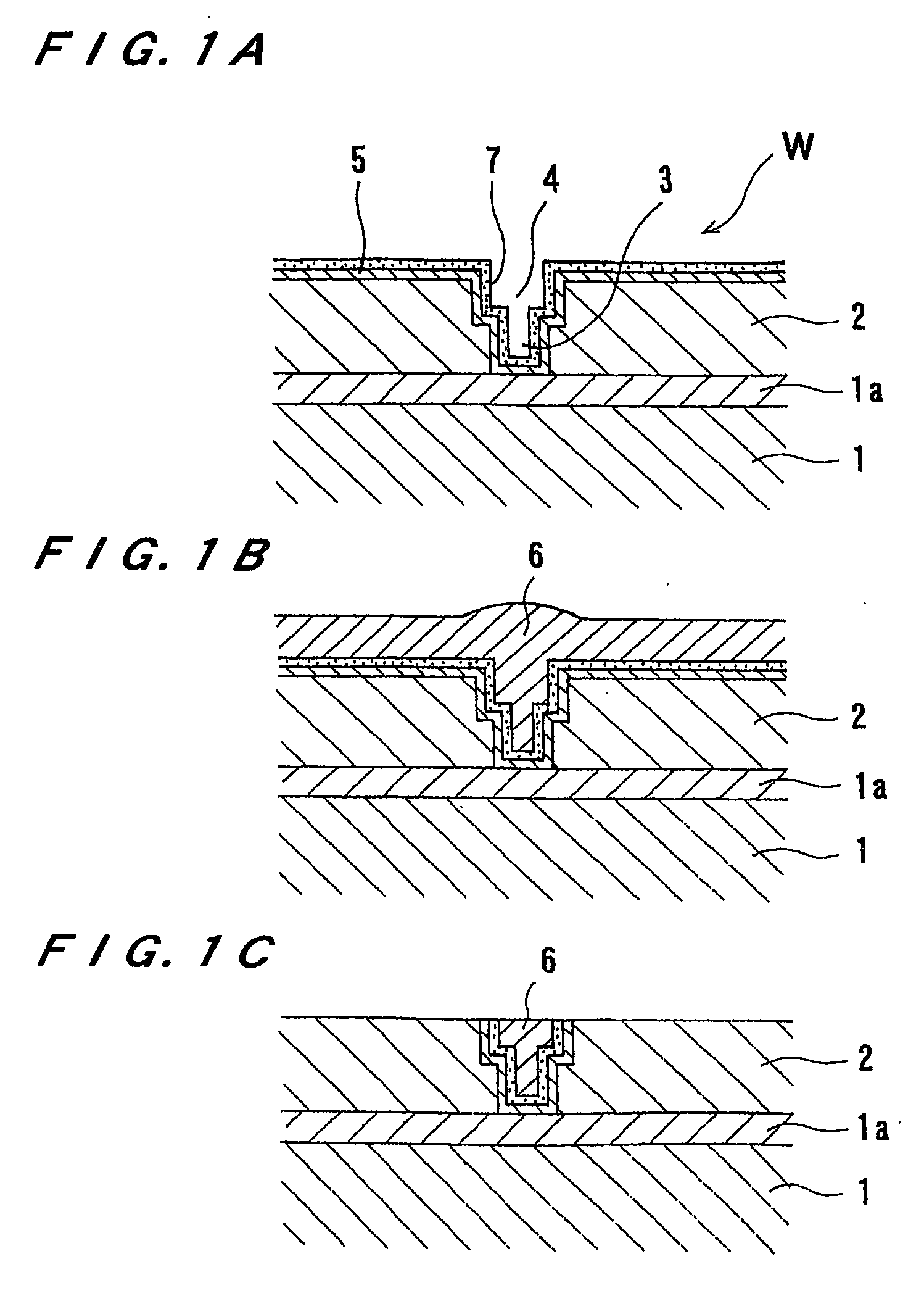Electolytic processing apparatus
a processing apparatus and electrolysis technology, applied in the direction of electrical-based machining electrodes, manufacturing tools, electric circuit machining, etc., can solve the problems of processing properties, workpiece surface roughness, and fiber seams that may influence the surface roughness of workpieces, and achieve stable processing performance and flexibility
- Summary
- Abstract
- Description
- Claims
- Application Information
AI Technical Summary
Benefits of technology
Problems solved by technology
Method used
Image
Examples
Embodiment Construction
[0067] An electrolytic processing apparatus and a substrate processing apparatus having the electrolytic processing apparatus according to embodiments of the present invention will be described below with reference to the accompanying drawings. In the following embodiments, a substrate is used as a workpiece and processed by an electrolytic processing apparatus. However, the present invention is applicable to any workpiece other than the substrate.
[0068]FIG. 5 is a plan view showing a substrate processing apparatus according to a first embodiment of the present invention. As shown in FIG. 5, the substrate processing apparatus has a pair of loading / unloading units 30, a reversing machine 32 for reversing a substrate, and an electrolytic processing apparatus 34. The loading / unloading units 30 serve as a loading and unloading section for loading and unloading a cassette accommodating the substrates. For example, as shown in FIG. 1B, the substrate W to be processed has a copper film 6 ...
PUM
| Property | Measurement | Unit |
|---|---|---|
| Electrical conductivity | aaaaa | aaaaa |
| Electrical conductor | aaaaa | aaaaa |
| Electric potential / voltage | aaaaa | aaaaa |
Abstract
Description
Claims
Application Information
 Login to View More
Login to View More - R&D
- Intellectual Property
- Life Sciences
- Materials
- Tech Scout
- Unparalleled Data Quality
- Higher Quality Content
- 60% Fewer Hallucinations
Browse by: Latest US Patents, China's latest patents, Technical Efficacy Thesaurus, Application Domain, Technology Topic, Popular Technical Reports.
© 2025 PatSnap. All rights reserved.Legal|Privacy policy|Modern Slavery Act Transparency Statement|Sitemap|About US| Contact US: help@patsnap.com



